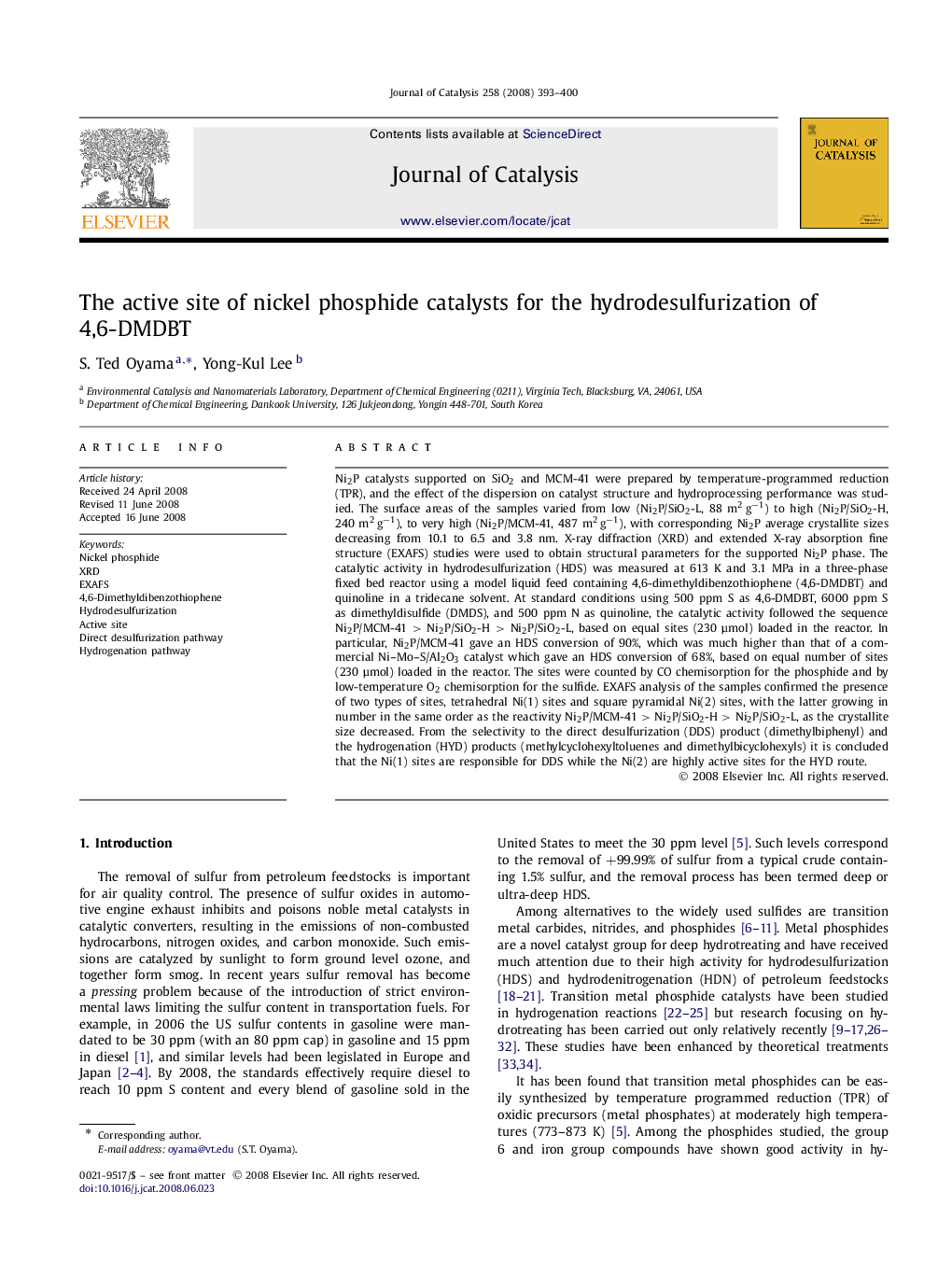| کد مقاله | کد نشریه | سال انتشار | مقاله انگلیسی | نسخه تمام متن |
|---|---|---|---|---|
| 62348 | 47635 | 2008 | 8 صفحه PDF | دانلود رایگان |

Ni2P catalysts supported on SiO2 and MCM-41 were prepared by temperature-programmed reduction (TPR), and the effect of the dispersion on catalyst structure and hydroprocessing performance was studied. The surface areas of the samples varied from low (Ni2P/SiO2-L, 88 m2 g−1) to high (Ni2P/SiO2-H, 240 m2 g−1), to very high (Ni2P/MCM-41, 487 m2 g−1), with corresponding Ni2P average crystallite sizes decreasing from 10.1 to 6.5 and 3.8 nm. X-ray diffraction (XRD) and extended X-ray absorption fine structure (EXAFS) studies were used to obtain structural parameters for the supported Ni2P phase. The catalytic activity in hydrodesulfurization (HDS) was measured at 613 K and 3.1 MPa in a three-phase fixed bed reactor using a model liquid feed containing 4,6-dimethyldibenzothiophene (4,6-DMDBT) and quinoline in a tridecane solvent. At standard conditions using 500 ppm S as 4,6-DMDBT, 6000 ppm S as dimethyldisulfide (DMDS), and 500 ppm N as quinoline, the catalytic activity followed the sequence Ni2P/MCM-41 > Ni2P/SiO2-H > Ni2P/SiO2-L, based on equal sites (230 μmol) loaded in the reactor. In particular, Ni2P/MCM-41 gave an HDS conversion of 90%, which was much higher than that of a commercial Ni–Mo–S/Al2O3 catalyst which gave an HDS conversion of 68%, based on equal number of sites (230 μmol) loaded in the reactor. The sites were counted by CO chemisorption for the phosphide and by low-temperature O2 chemisorption for the sulfide. EXAFS analysis of the samples confirmed the presence of two types of sites, tetrahedral Ni(1) sites and square pyramidal Ni(2) sites, with the latter growing in number in the same order as the reactivity Ni2P/MCM-41 > Ni2P/SiO2-H > Ni2P/SiO2-L, as the crystallite size decreased. From the selectivity to the direct desulfurization (DDS) product (dimethylbiphenyl) and the hydrogenation (HYD) products (methylcyclohexyltoluenes and dimethylbicyclohexyls) it is concluded that the Ni(1) sites are responsible for DDS while the Ni(2) are highly active sites for the HYD route.
Journal: Journal of Catalysis - Volume 258, Issue 2, 10 September 2008, Pages 393–400